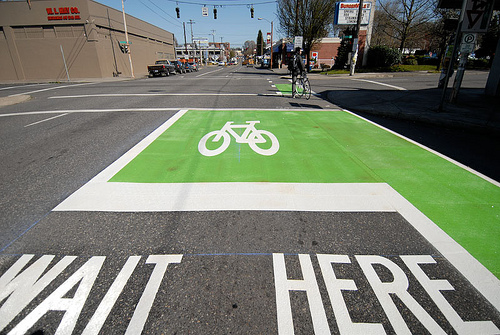HALIFAX – Roger Geller, the City Bicycle Coordinator of Portland, Oregon paid a visit to Halifax on the weekend of October 24th. Portland has long been revered for its well above-average bicycle ridership (eight times more than Halifax). It’s a city where cyclists are more than just tolerated, but encouraged to be a dominant presence within the city’s traffic. Restaurants and businesses beg the city to remove their store-front parking, and replace it with massive bike corrals for the leagues of cyclists who arrive to buy coffee, pet supplies, or iPods. It’s a city that has increased its number of dedicated cyclists by exposing the inherent joy of a community where cycling is not only important, but also necessary. Mr. Geller comes from a city that Halifax could be.
The question is: how did Portland get to be the way it is? According to Geller, it comes down to one simple statement he stands firmly behind: “Build it and they will come.”
Previous to 1995, Portland looked like an average North American city — lots of suburbs, bike-unfriendly bridges, steep hills in the city centre, and not a whole lot of cyclists.
Sound familiar?
Within 15 years, the citizens of Portland made it the city it is today. How? They set up a city which cyclists could enjoy. The first step was to enact a policy declaring Portland a city where people would choose to bike rather than drive.
That’s it, a simple statement; not a law, not an imposition, not an arbitrary goal placed in a mission statement buried somewhere in city hall. This statement was enough to empower the people of Portland; it led to a flurry of excitement and understanding. In turn, this sparked the creation of an infrastructure that is now envied by most other cities on this side of the planet. Upon implementation of the policy, bicycle transportation increased, and activity within the cycling community flourished.
Soon, facilities like co-ops, distinct bike lanes, and bike boxes (a bike management system to ensure safety at red lights) popped up everywhere. The facilities made cycling easier, which encouraged more cyclists to ride, which demanded more policies and understanding between cyclists and motorists, which brought in more facilities, which encouraged even more cyclists to ride, ad infinitum. It’s now 2009, and in Portland, the struggle to establish bikes as a viable transportation alternative is over.
Halifax, however, has yet to achieve this. Geller explained a variety of reasons as to why only one percent of the population bikes in a city like Halifax: lack of communication between motorists and cyclists, confusing downtown streets that scream for bike lanes, and a helmet law that is laughable to the rest of Canada, where there is no such enforcement. This one percent sliver of the population is the brave, the few, and perhaps even the lucky, for surviving our roads each day.
Geller explained that an increase of bike lanes automatically equates to an increase of ridership — up to even 10%. In the meantime, people are hesitant to ride without proper infrastructure. This is why, for example, Montreal—a city with sound bike infrastructure—has approximately ten times more the ridership per capita than Halifax.
I was fortunate enough to have dinner with Geller on the crisp Thursday afternoon that he was here. As I glanced to see that my Nishiki was still safely locked outside of the restaurant, he told me about a trip he once took to Amsterdam. As he and his son swiftly cycled towards the city center, he felt as comfortable as if it was a riverbank path in a Portland park; a path he certainly played a hand in creating. Geller told me that with the wind in his hair, his son at his side, and the small Dutch automobiles an afterthought, he experienced what Portland could be. It is what our city could also be—what all of North America could be. All we need is a statement.
Check back next week for a real glimpse of what Halifax could be with exemplary images of a new, cycling-improved HRM.
Photo by the Institute for Transportation and Development Policy

